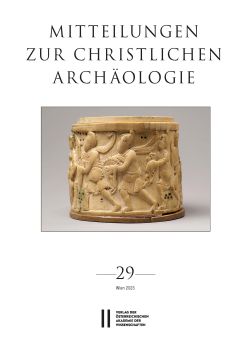
Mitteilungen zur Christlichen Archäologie 29, pp. 34-50, 2023/10/25
The Church of St. John in Ephesus was one of the most important pilgrimage sanctuaries of the Eastern Mediterranean during Late Antiquity and into the Middle Ages. The magnificently decorated marble fragments, identified early on as templon epistyles, have been frequently cited as important archaeological evidence for the Middle Byzantine liturgical furnishing of the Church. However, a reexamination of the marble epistyles leads to the conclusion that they could not have been components of a templon. In the following, the reasons for this re-evaluation of the marble reliefs will be explained and considerations as to their possible function and placement in the churchs interior will be discussed.
Keywords: Ephesus, architectural sculpture, liturgical furnishing, epigraphy, Byzantine